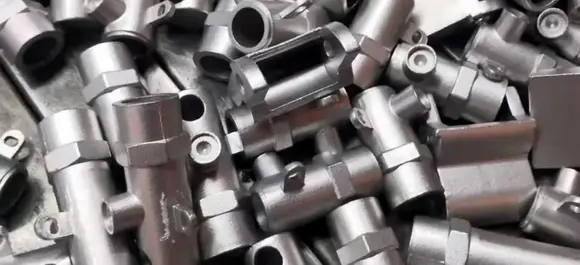Mobile:+86-311-808-126-83
Email:info@ydcastings.com
cast iron sewer pipe connections
Understanding Cast Iron Sewer Pipe Connections A Comprehensive Guide
Cast iron sewer pipes have long been recognized for their durability and strength, making them a popular choice for plumbing and sewage systems. Their ability to withstand high pressure and resist corrosion contributes to their longevity. However, the connections between these pipes are crucial for ensuring a watertight seal, preventing leaks, and maintaining an efficient sewage system. In this article, we will explore the types of connections used with cast iron sewer pipes, the importance of proper installation, and maintenance considerations.
Types of Connections
There are several methods for connecting cast iron sewer pipes. The most common connection types include
1. Hub and Spigot Connections This traditional method involves a hub (a larger end) and a spigot (a smaller end). The spigot fits into the hub, creating a secure fit. To ensure a watertight seal, this connection may utilize lead, rubber gaskets, or other sealing materials. Hub and spigot connections are typical in older buildings or in systems where a strong bond is essential.
2. No-Hub Connections Also known as banded connections, these involve a rubber coupling or sleeve that fits over the ends of two adjacent pipes. Stainless steel bands are used to tighten the connection, creating a flexible yet secure bond. No-hub connections are favored in many modern installations due to their ease of use and ability to accommodate slight shifts in alignment.
3. Compression Joint This type of connection uses a compression fitting that secures the pipes with a tight seal. Often used in repair scenarios, compression joints allow for quick and efficient adjustments during installations or routine maintenance.
4. Flanged Connections In some cases, flanged connections are used, particularly where pipes need to be disassembled for service. A flange is a flat rim connected to the end of a pipe, allowing it to be securely bolted to another flanged pipe or fitting.
Importance of Proper Installation
The proper installation of cast iron sewer pipe connections cannot be overstated. Incorrectly installed connections can lead to serious problems, including leaks, blockages, and costly repairs. Here are some critical factors to consider during installation
cast iron sewer pipe connections

- Alignment Ensuring that pipes are correctly aligned is vital for preventing stress on joints, which can lead to premature failure. Misalignment may also obstruct waste flow, resulting in backups.
- Sealing Materials Utilizing appropriate sealing materials is key. With hub and spigot joints, careful application of lead or the right type of gasket is essential. For no-hub connections, ensure that rubber sleeves are undamaged and properly tightened.
- Support and Stability Pipes should be adequately supported throughout their length to minimize sagging or movement. This support is essential in maintaining the integrity of connections, particularly in challenging terrain or where pipes are subjected to heavy loads.
Maintenance Considerations
Regular maintenance is necessary to uphold the efficiency of cast iron sewer pipe connections. Here are some maintenance tips
- Inspection Periodically inspect connections for signs of wear, corrosion, or leaks. Early detection can prevent more significant issues down the line.
- Cleaning Accumulation of debris can lead to blockages. Regular cleaning of pipes and joints helps maintain optimal flow and prolong the life of the system.
- Professional Assessment For serious concerns or if the system is older, consulting a plumbing professional can provide insights into the condition of the connections and overall system.
Conclusion
In conclusion, the connections between cast iron sewer pipes play a pivotal role in the overall effectiveness and reliability of sewage systems. Understanding the various types of connections, ensuring proper installation, and committing to regular maintenance will not only enhance the lifespan of the plumbing system but also safeguard against costly repairs. Investing time and resources into these aspects of cast iron sewer pipes ensures a functional and efficient waste management system.
-
Why Should You Invest in Superior Pump Castings for Your Equipment?NewsJun.09,2025
-
Unlock Performance Potential with Stainless Impellers and Aluminum End CapsNewsJun.09,2025
-
Revolutionize Your Machinery with Superior Cast Iron and Aluminum ComponentsNewsJun.09,2025
-
Revolutionize Fluid Dynamics with Premium Pump ComponentsNewsJun.09,2025
-
Optimizing Industrial Systems with Essential Valve ComponentsNewsJun.09,2025
-
Elevate Grid Efficiency with High-Precision Power CastingsNewsJun.09,2025











